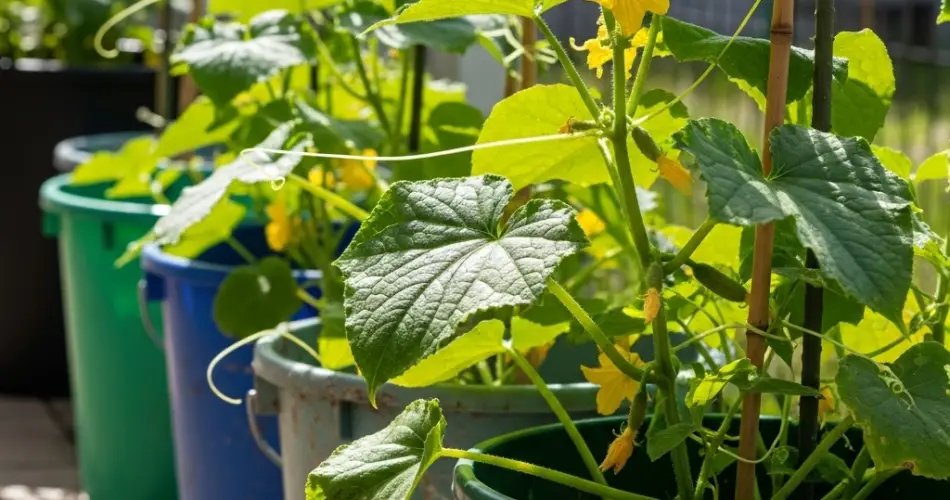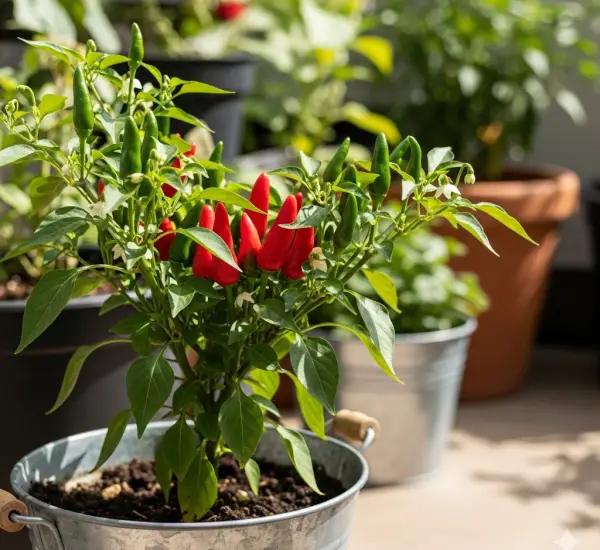Few things say summer like the crisp crunch of a fresh cucumber. Fortunately, you don’t need a sprawling garden to grow your own—just a sunny corner and a bucket. Bucket-grown cucumbers are perfect for small spaces like balconies, patios, or rooftops, and with the right care, they can produce a continuous harvest all season long.
Whether you’re new to gardening or a seasoned grower looking to make the most of limited space, cucumbers are a fantastic crop for container gardening. Here’s how to grow them in buckets and enjoy a steady supply of fresh cucumbers from your own compact garden.
Why Grow Cucumbers in Buckets?
Cucumbers are fast-growing, productive, and surprisingly adaptable to container life. Growing them in buckets offers several advantages:
-
Space-saving: Ideal for small spaces like balconies or patios.
-
Pest control: Containers reduce the risk of soil-borne pests and diseases.
-
Mobility: Easily move your bucket to follow the sun or shelter from storms.
-
Vertical growth: Cucumbers climb, so they benefit from vertical supports that also save space.
-
Continuous yield: With proper care, cucumbers will keep producing new fruit for weeks.
By using buckets, you can create a mini cucumber garden almost anywhere—with a little sunlight and care, you’ll enjoy a regular harvest all season long.
Best Cucumber Varieties for Buckets
Not all cucumber varieties are ideal for containers. The best choices are compact, bush, or vining varieties that thrive in limited space but still produce high yields.
Recommended varieties:
-
‘Bush Champion’ – Compact and productive, ideal for smaller containers.
-
‘Spacemaster’ – Specifically bred for container growing.
-
‘Patio Snacker’ – Great flavor and manageable vines for small spaces.
-
‘Mini Munch’ – Produces small, snack-sized cucumbers continuously.
-
‘Marketmore 76’ – A vining type that does well in larger buckets with support.
Choose based on your space and taste preferences—most varieties will produce continuously if kept healthy and regularly harvested.
Bucket and Support Setup
Bucket size:
-
Minimum size: 5-gallon bucket (larger is even better)
-
Depth: At least 12 inches
-
Drainage: Drill several holes in the bottom for water to escape
Use food-grade plastic, grow bags, or any sturdy container with good drainage. Place a trellis, tomato cage, or bamboo poles in the bucket at planting time to support climbing vines as they grow.
The Right Soil Mix
Cucumbers thrive in loose, well-draining soil that’s rich in nutrients. A healthy root zone is critical to continuous production.
Ideal soil mix:
-
50% high-quality potting mix
-
30% compost (adds nutrients)
-
20% perlite or coconut coir (improves aeration and drainage)
Aim for a soil pH between 6.0 and 7.0. Avoid using heavy garden soil, which can compact and restrict root development.
Planting and Spacing
You can grow cucumbers from seed or transplant young seedlings into your bucket.
If planting from seed:
-
Sow 2–3 seeds about 1 inch deep.
-
Keep the soil moist until germination (7–10 days).
-
Thin to the strongest plant once seedlings emerge.
If transplanting:
-
Plant one healthy seedling per 5-gallon bucket.
-
Water well after planting and add a light mulch layer to retain moisture.
Care Tips for Continuous Harvests
Sunlight:
Cucumbers need 6–8 hours of full sun daily. Position buckets in the sunniest spot available.
Watering:
Keep the soil consistently moist, but not soggy. Cucumbers are water-loving plants—irregular watering can lead to bitter fruit. Water deeply 2–3 times a week, more during hot spells.
Fertilizing:
Feed your cucumber plant every 2–3 weeks with a balanced liquid fertilizer (10-10-10 or organic compost tea). Once the plant starts flowering, switch to a fertilizer with more potassium and phosphorus to boost fruit production.
Training vines:
Guide the vines up the trellis to promote airflow and save space. Vertical growth also helps reduce disease by keeping leaves and fruit off the ground.
Pollination and Flowering
Cucumbers produce both male and female flowers. Bees and other pollinators are essential for fruit production, especially for outdoor bucket gardens. For indoor or balcony setups with limited pollinator access, you can hand-pollinate by transferring pollen from male to female flowers using a small paintbrush.
Harvesting for Continuous Yield
Pick cucumbers regularly to encourage new fruit. If you leave mature cucumbers on the plant, it will slow or stop production.
When to harvest:
-
Most varieties are ready when 6–8 inches long
-
Pick every 2–3 days once fruiting starts
Use scissors or garden shears to avoid damaging the plant during harvest.
Common Issues and Solutions
-
Yellowing leaves: Often a sign of overwatering or nutrient deficiency.
-
Powdery mildew: Improve airflow and avoid watering leaves; treat with neem oil if necessary.
-
Fruit not forming: May be a pollination issue—hand-pollinate as needed.
Regular inspection and maintenance help prevent most problems.
Final Thoughts
Growing cucumbers in buckets is a fantastic way to enjoy fresh, crunchy cucumbers from your own home—even with limited space. By choosing the right variety, using well-prepared soil, and staying on top of watering and harvesting, you can enjoy continuous harvests all season long.
So grab a bucket, plant a few seeds, and get ready for a summer filled with the crisp taste of homegrown cucumbers—straight from your balcony or backyard.



